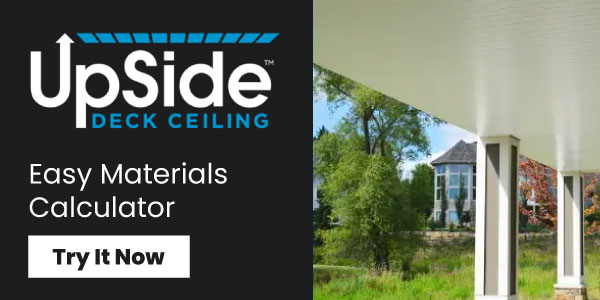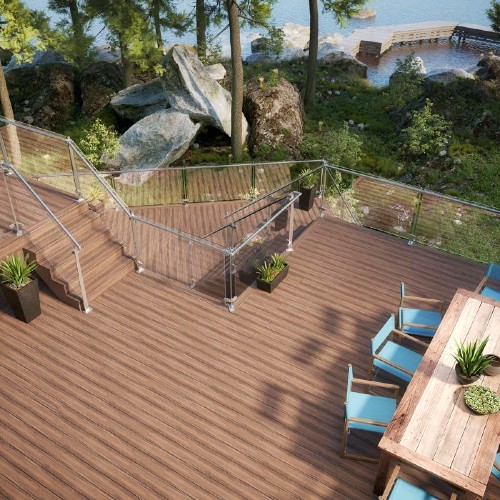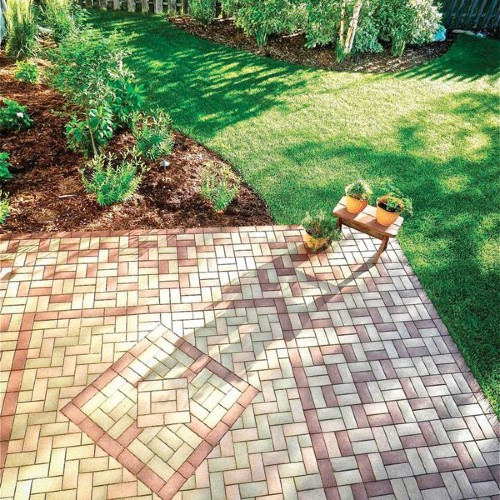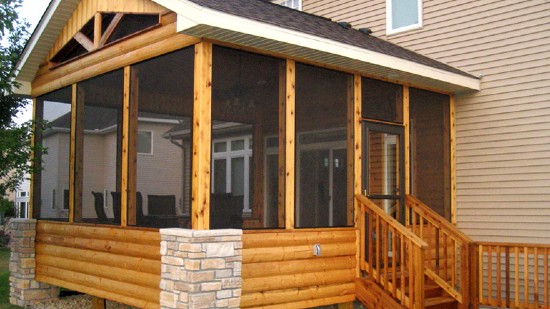DECK VS PATIO VS PORCH
Whether you’re buying a home, adding a new outdoor living space or renovating the space you have, it’s important to know the common terms for outdoor living spaces. Knowing the differences between a porch, a deck and a patio will help you browse for more accurate inspiration, research more focused options and communicate better with realtors and contractors.
Though decks, patios and porches can come in all shapes and sizes, decks are typically raised, off-ground platforms, while patios are ground-level living spaces. Porches, meanwhile, are covered structures. We’ll run through a few more defining characteristics of each category below.
Table of Contents:
- What is the difference between a deck, patio and porch?
- What is a deck?
- What is a patio?
- What is a porch?
WHAT IS THE DIFFERENCE BETWEEN A DECK, PATIO AND PORCH?
Decks, porches and patios each have their own unique advantages. To get the best outdoor living possible, it’s important to zero in on your own top priorities to pick the perfect type of space for your lifestyle.
Let’s run through the differences between a porch, a deck and a patio so you can focus your search on the outdoor living space that best suits your vision and needs:
What is a Deck?
Decks are off-ground platforms that are built up above the ground. That doesn’t mean every deck is a full story off the ground, though. Decks can range from just inches off the ground to a structure high enough to require an entry staircase. When a deck is raised more than 3 feet off of ground level, building codes require a deck railing system.
Decks can be built in a home’s front yard, backyard, or side yard. Decks can wrap around a home, or be a free-standing structure not attached to a house. Whether they attach to your home or not, decks are generally considered to be an addition to a house, not a core part of the house’s architecture or design.
What Are Decks Made Of?
To raise a deck up off the ground, builders typically use either an inexpensive wood like treated pine or a metal framing system like Fortress Evolution Steel Deck Framing.
The deck surface sits on top of the framing. Many older decks are made of wood boards, though more builders are turning to more durable composite deck board and PVC deck board options.
Benefits of Decks
- More height means better views
- Can be built on uneven ground
- Higher resale value than patios
By virtue of their raised height, decks typically offer better views than patios. The height does typically come with requirements, though. You’ll usually need to obtain building permits to create a new deck, and it’s important to inspect and maintain your deck’s structure to make sure it remains safe. (This is where metal framing and composite decking can be a lifesaver, cutting down on your regular maintenance while still allowing you to reap the superior view of a deck).
Unlike patios, decks don’t require a space with level ground - deck framing can be built on all sorts of uneven surfaces.
Decks require a bigger initial investment of time and money than patios, but they also provide much bigger financial returns. Homes with decks generally have higher resale values than decks with patios.
What is a Patio?
Patios are ground-floor outdoor seating areas that can take nearly any shape, design, or layout. Backyard patios can be covered or uncovered, connected to a house or free-standing, and made out of essentially any flooring and landscaping material imaginable.
What Are Patios Made of?
You can build a patio out of a wide range of materials, including wood deck tiles, bricks, or concrete. One durable, low-maintenance option growing in popularity is composite deck pavers. Some deck pavers, like AZEK Patio Pavers, come with a dimpled installation grid for easy installation and to keep pavers from sliding out of place.
Benefits of Patios
- More privacy
- Typically don’t require building permits
- Lower cost and relatively easy to build
Remaining at ground-level, patios tend to exchange a deck’s spectacular views for a more private living space, especially in a fenced-in yard.
Patios are a cost-effective outdoor gathering space, and usually don’t require building permits - though you’ll want to check with your city, county or municipality to make sure you’re in the clear before you start a project.
While a patio doesn’t require a railing, you can upgrade your patio with screen systems, railing, or privacy walls. Fun fact: A patio is considered a courtyard if it’s surrounded by walls.
What is a Porch?
A porch is a covered structure that is attached to a house, usually through the front or back door. Porches can be open-air with columns or posts supporting the corners, or they can be enclosed, usually with screens or glass.
Unlike patios and decks, porches are a part of a house’s architecture; usually, they share a roof with the rest of the house, rather than being a separate addition.
Depending on a home’s layout, a porch can be level with the ground like a patio or raised off the ground like a deck.
Benefits of Porches
- Protection from weather and potentially insects
- Privacy
With a covering - typically an extension of your home’s roof - a porch provides good protection from the elements, including sun and rain. If it’s screened-in, a porch also keeps out insects like mosquitoes.
Even if it’s raised some off the ground, a porch provides a definite feeling of privacy - it’s closer to an indoor living space than a deck or a patio. That’s only amplified if your porch is screened-in or surrounded by glass windows.
With rain protection overhead, a porch also opens up your space to a wider range of outdoor furniture - though you’ll still want to have a dry space to store things like cushions and pillows while you’re not using them.









